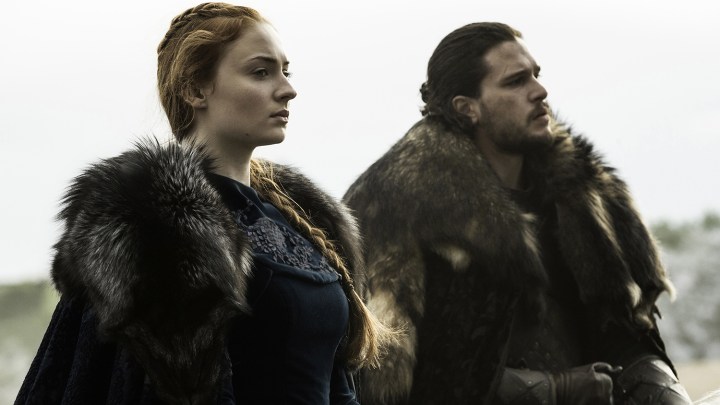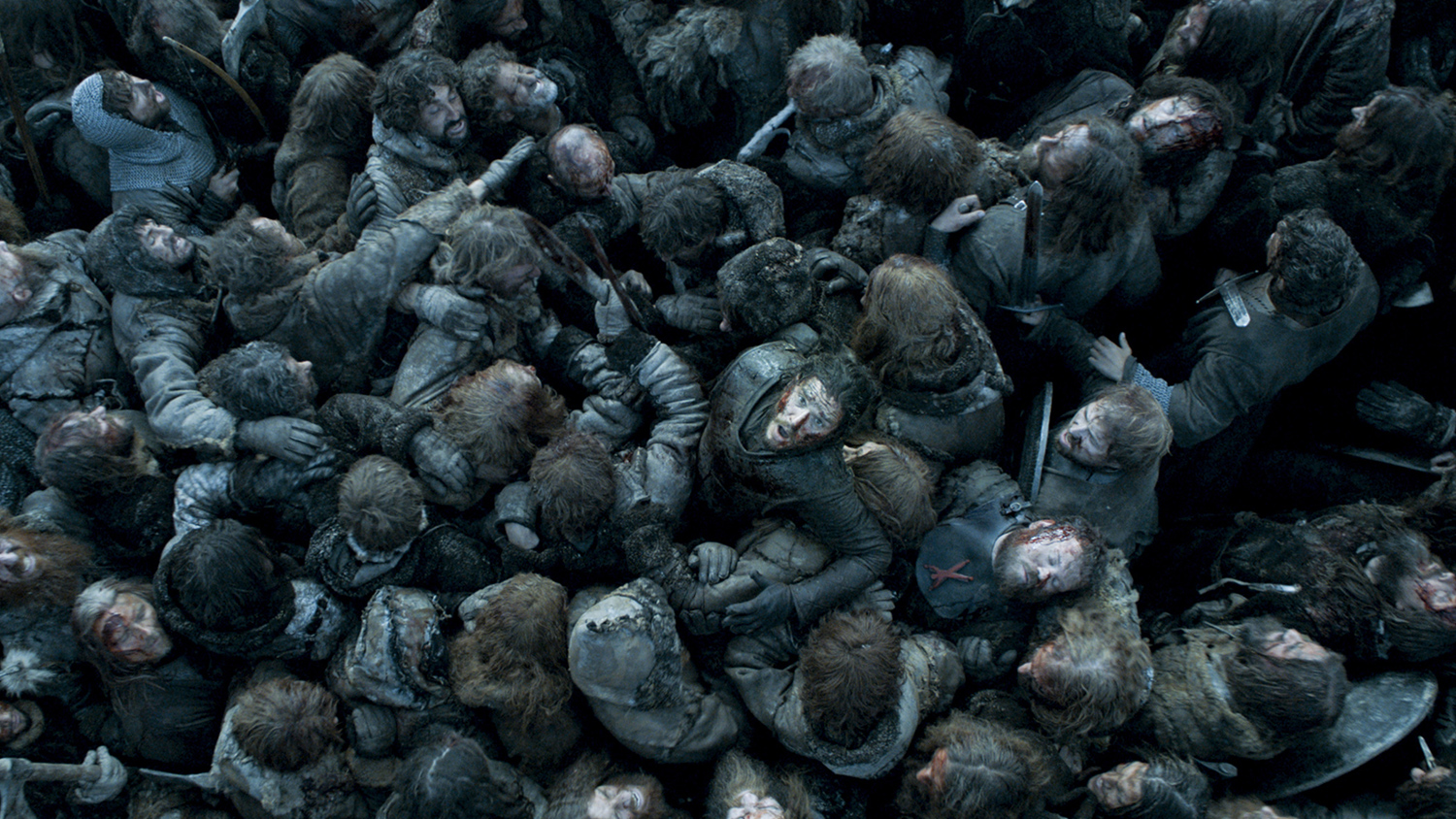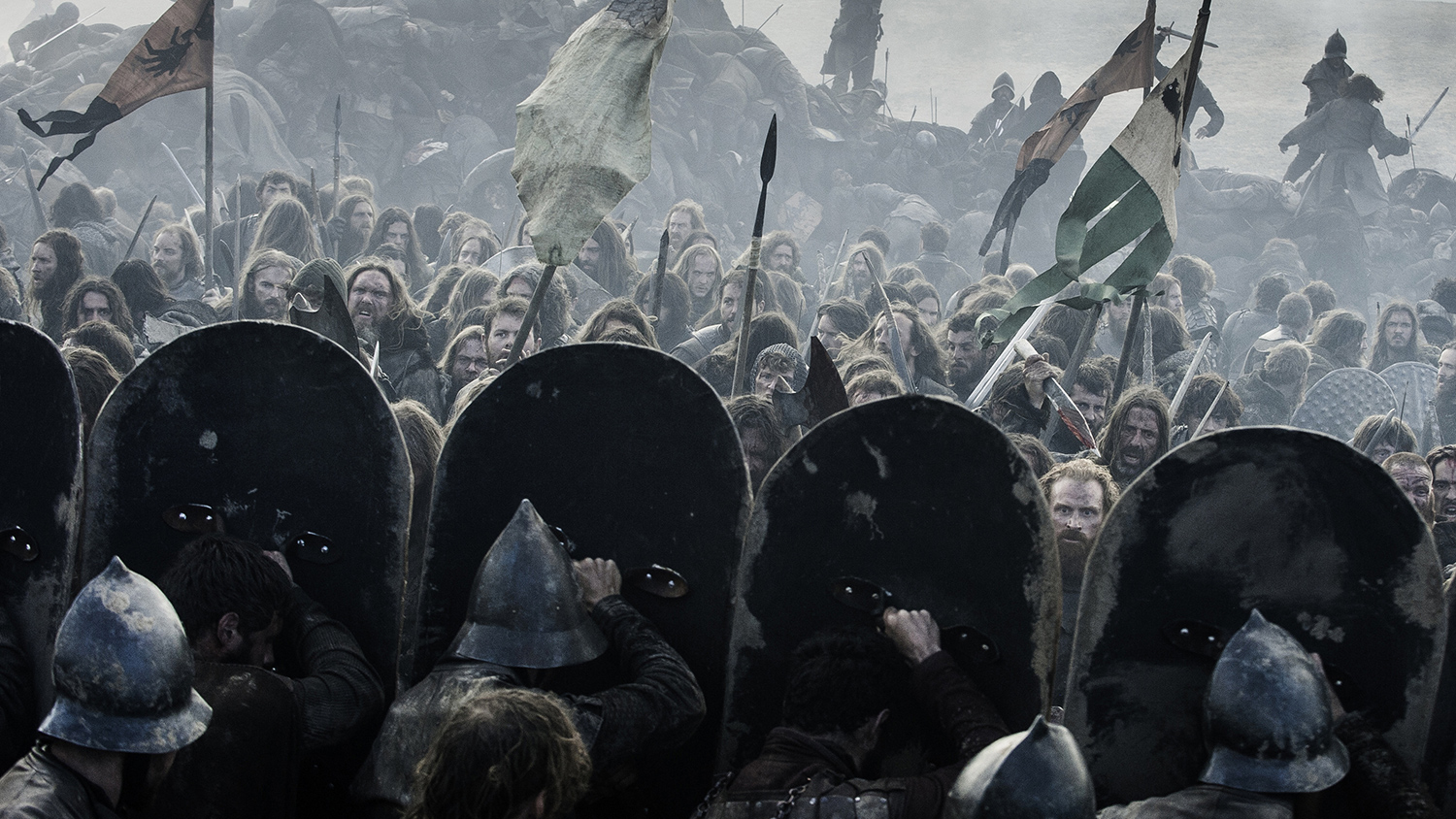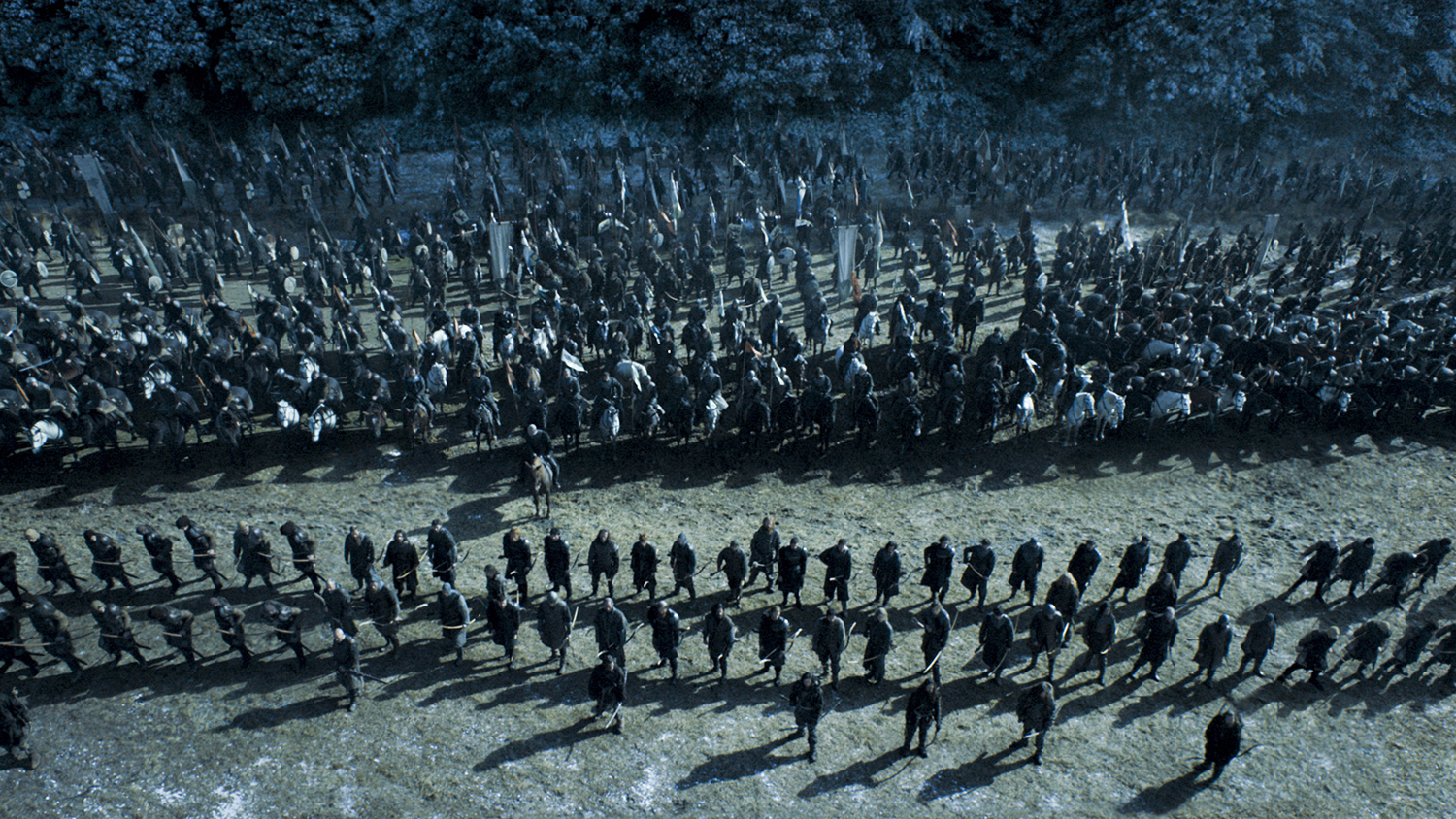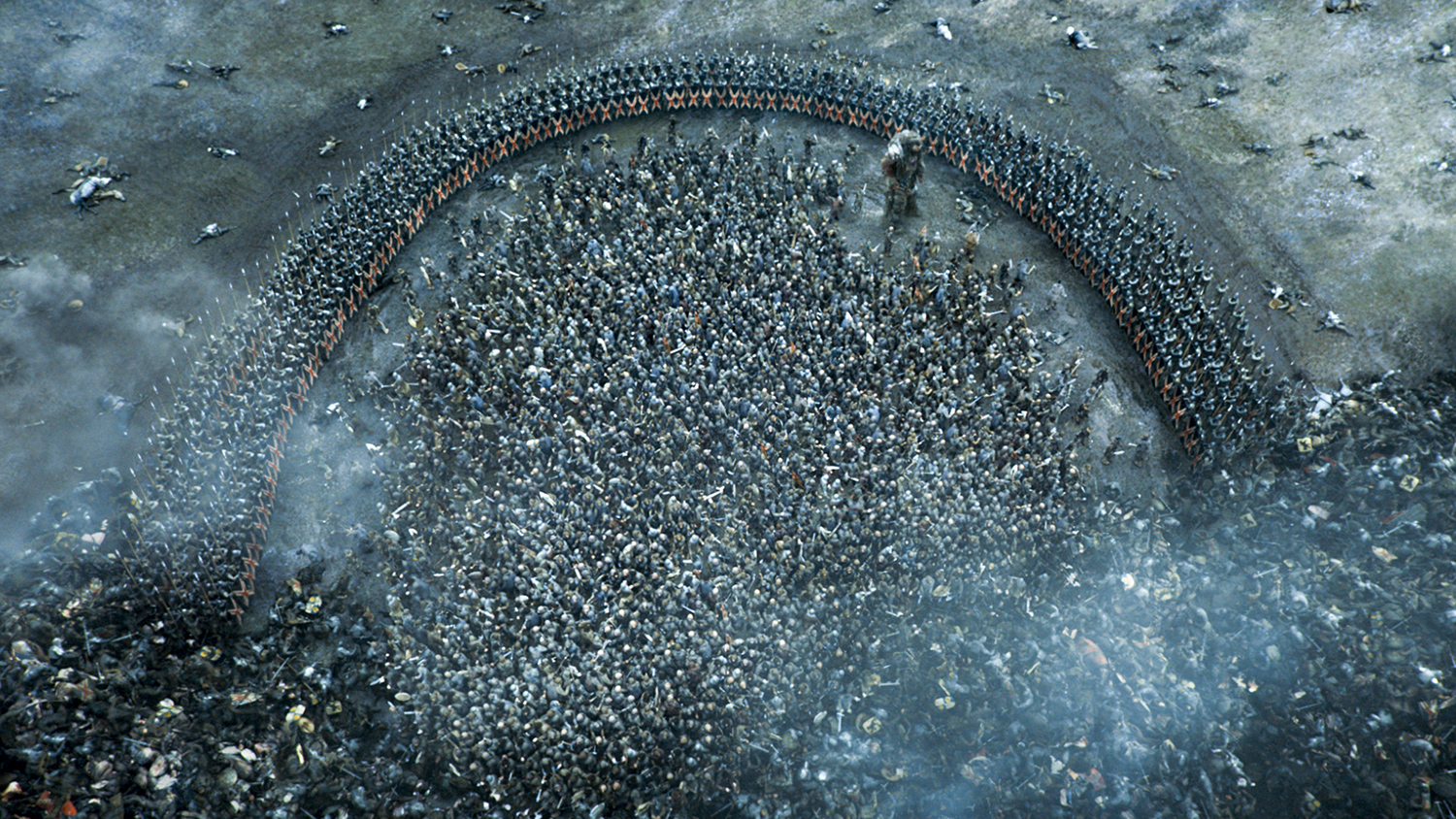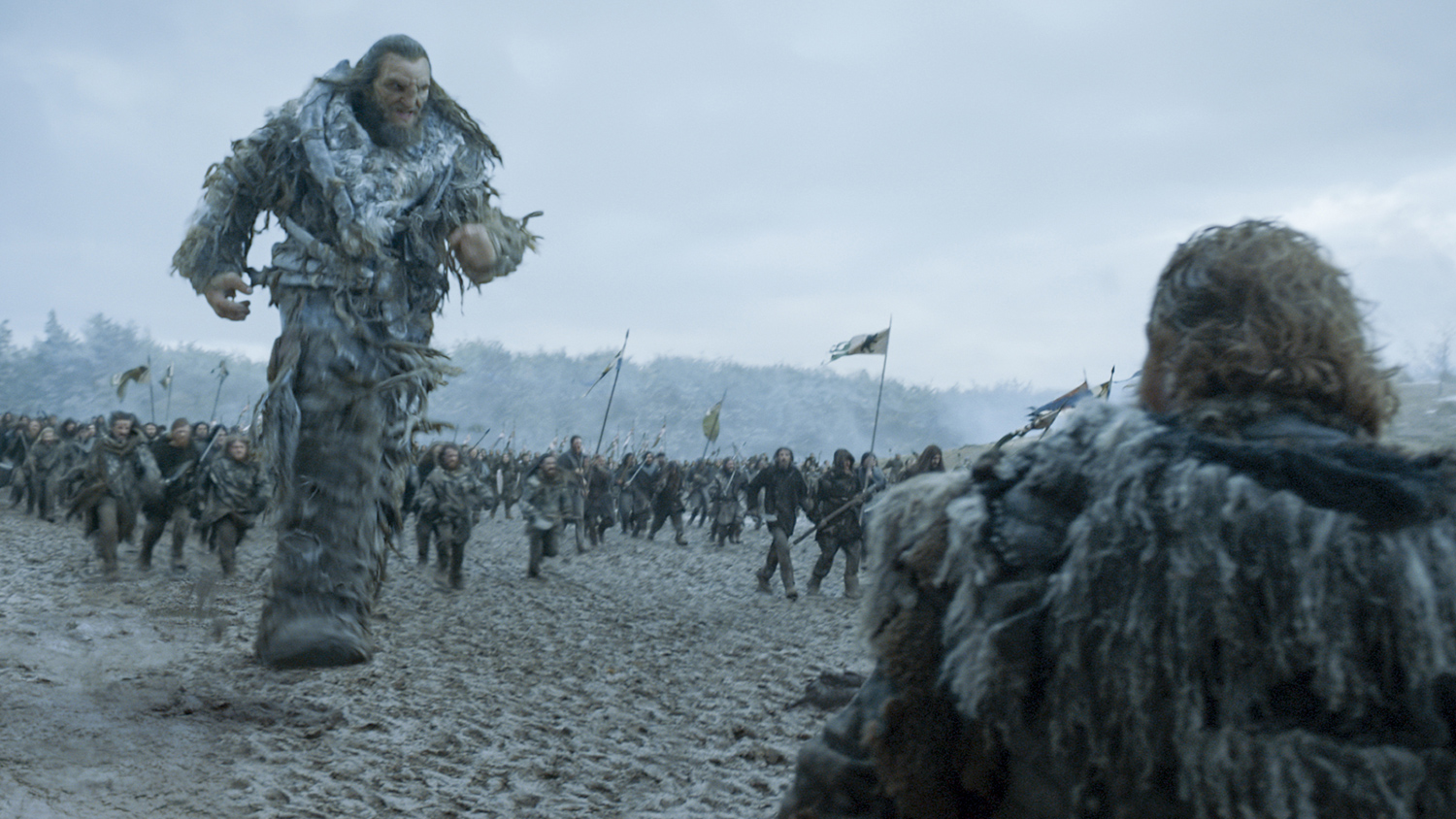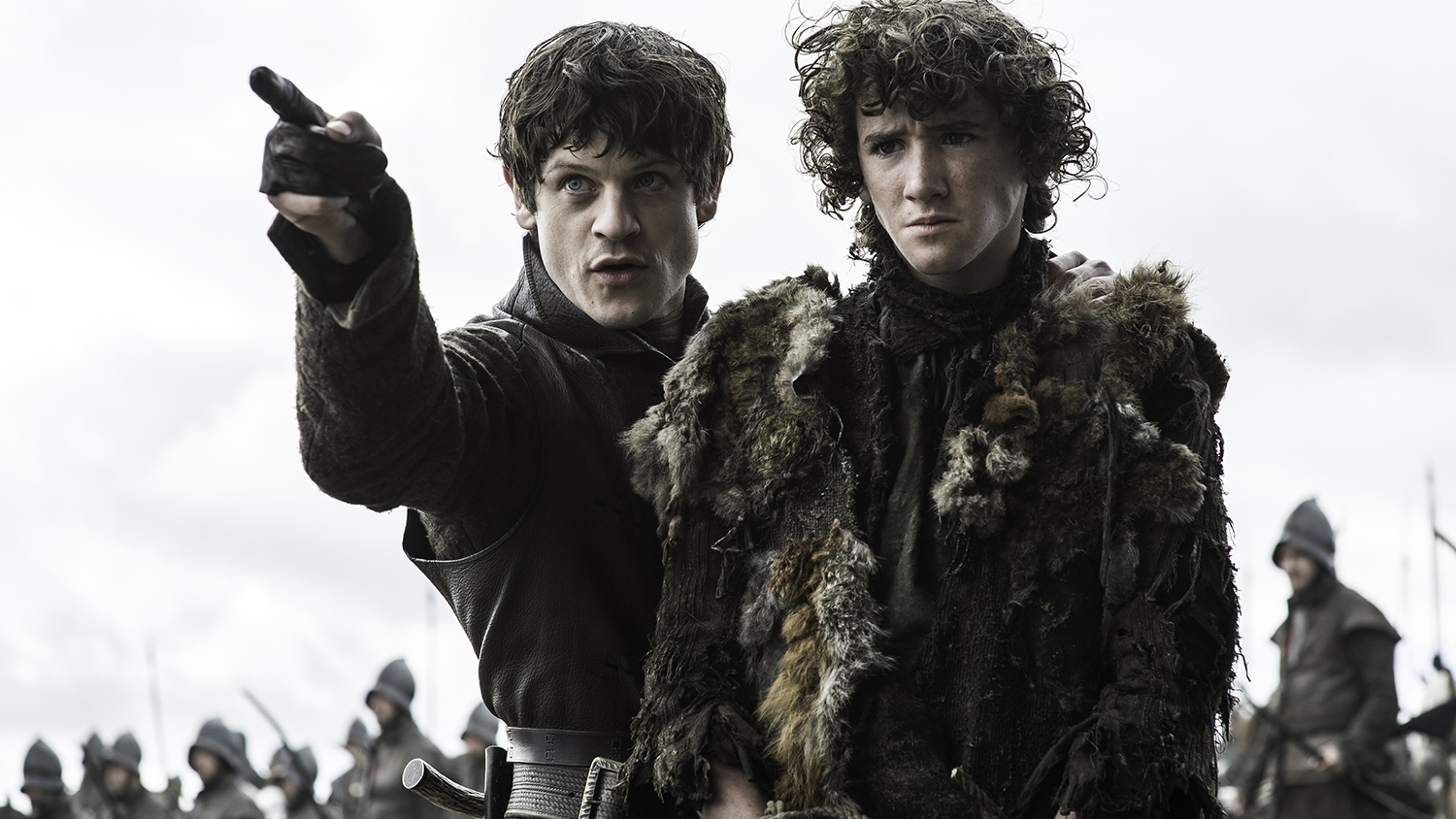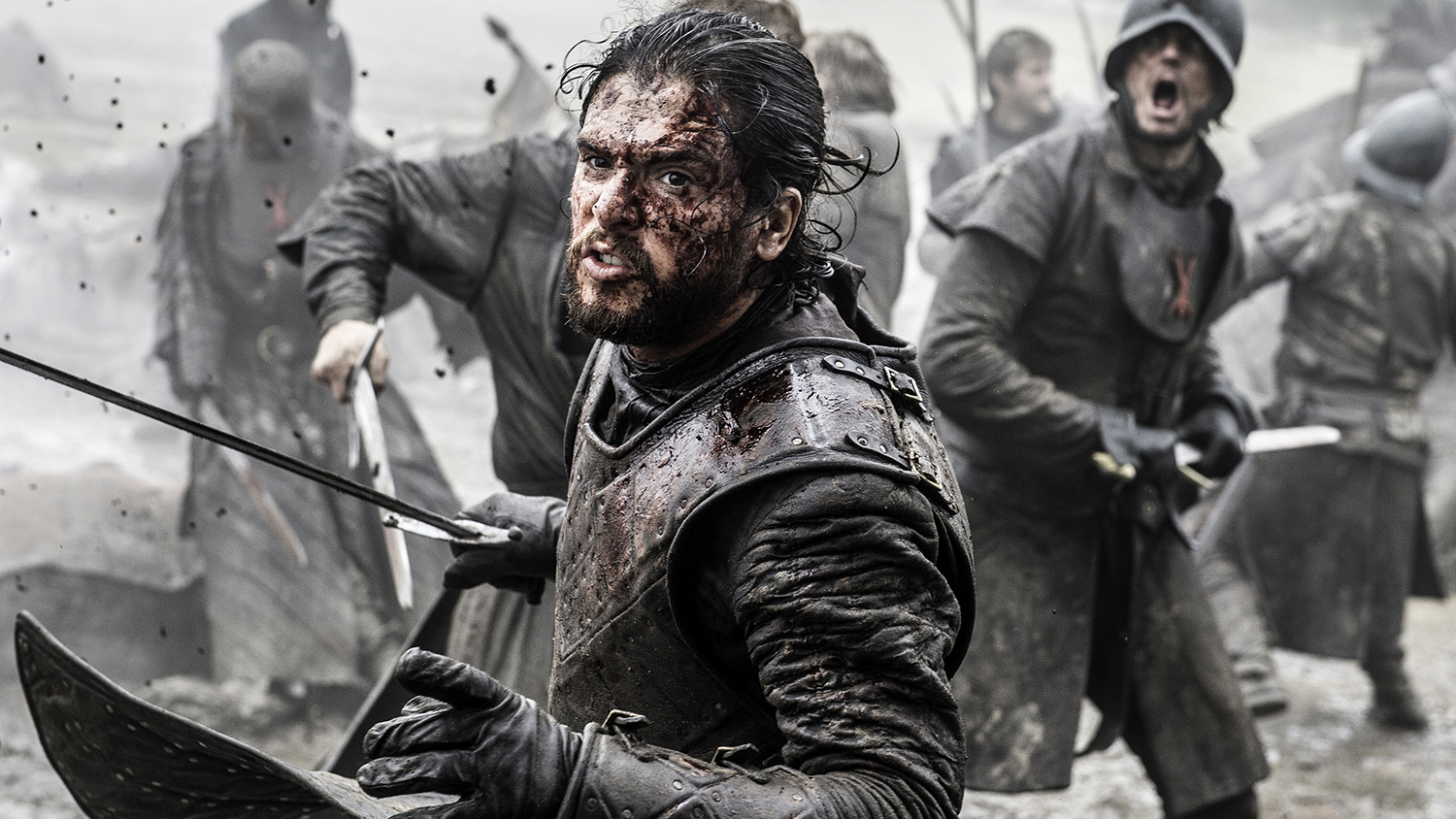Note: this article discusses plot details from the show Game of Thrones as well as the Song of Ice and Fire novels.
There is a certain cruelty, intentional or not, in titling the season finale of Game of Thrones’ sixth season The Winds of Winter. It is, after all, the working title for the next entry in George RR Martin’s series of novels. Readers have waited five years since the release of the last novel, and for those who started with the first book, A Game of Thrones, way back in 1996, watching as the television adaptation reveals scenes and details 20 years in the making can be bittersweet. In using The Winds of Winter as title for the season 6 finale, showrunners David Benioff and DB Weiss have planted their flag in Martin’s story.
In the end, how would the show perform, no longer guided by the books? At times, season 6 is a narrative that embraces the worst of television, relying on twists and drawn out mysteries to keep audiences watching and talking. However, season 6 also reaches new cinematic heights, putting together some of the most well-composed scenes in television history. Below is how, unguided, Game of Thrones is worse, and better than it has ever been.
Season 6 lacks suspense, preferring shock and awe
Martin’s novels have often been praised for subverting traditional fantasy narratives, and this praise translated to the early seasons of Game of Thrones. Many fantasy series follow a traditional hero’s journey, emphasizing physical deeds and a black and white morality, but this show was about politics, not heroism. Rather than large battles and flashy set pieces, early GoT examined the political and social structures of its fantasy world, and the people trying to navigate those structures. Few characters in GoT fit squarely into the role of hero or villain, and the morally gray, complicated narrative produced tension: viewers would wonder whose plans will work, whose will fail?
Unexpected eruptions of violence may surprise the audience, but they lack the brutal catharsis of earlier seasons.
Ned Stark’s role in the first season exemplifies the series’ ideals. A stoic man of honor, Ned tries to reform the corrupt politics of King’s Landing. In any other fantasy novel or series, he would probably discover villains and bring them to justice. But in Game of Thrones, the audience is made aware very early of what is going on in King’s Landing. We are shown that Queen Cersei and her brother are lovers, and thus, while Ned investigates the truth about Prince Joffrey’s parentage, the revelation is not a surprise. Rather than a shocking reveal that Joffrey is the product of incest, Ned’s story creates tension, as the audience can see that he is swimming with sharks even when he does not.
Contrast season 1’s slowly drawn noose with the guillotine that is season 6. Game of Thrones has always had its share of “shocking” moments (Ned’s execution, the Red Wedding), but those moments were typically the result of long build-ups, as characters make mistake after mistake until death seems the only natural consequence. In season 6, however, death comes at a moment’s notice, and while unexpected eruptions of violence may surprise the audience, they lack the brutal catharsis of earlier seasons.
The first episode of season 6 offers clear example of the show’s new priorities: the coup in Dorne. In the novels, Dorne is a hotbed of rebellion, as Prince Doran secretly works to arrange an alliance with the Targaryens (both Daenarys and Aegon, who is so far absent from the show) with the ultimate goal of overthrowing the Lannisters. Doran is playing a long game, and although his nieces, the Sand Snakes, criticize what they perceive as inaction, he explains that the grass that hides the viper is as important as the viper itself.
In the show, Doran seems not to have any plans; if he does, the audience will never know. The Red Woman features a brief check-in with Dorne, in which the Sand Snakes, led by Oberyn’s lover Ellaria, assassinate Doran and his son and assume control of Dorne. It’s a shocking moment for a few reasons. First, the Sand Snakes are upset that Doran has not avenged their father, so it seems odd that they would choose to wipe out the rest of Oberyn’s family. Second, there is no blowback for the coup; Doran’s guards, apparently disgusted by his weakness, simply watch as he is murdered. Dorne remains out of sight for most of the season, and when the show finally returns to it in the finale, Ellaria seems to be sitting comfortably, despite being a usurper with no legal or genealogical claim to the throne. The only-slightly-bloody revolution in Dorne is shocking not only as an event, but for what it says about the show’s sensibilities: the machinations of earlier seasons have given way to sudden, violent clearings of the deck.
The northern storyline is typically heroic, and boring
Perhaps nowhere is the show’s watered-down approach to narrative more apparent than in the North. While the novels are not as far along in this story, they have set up groundwork for the eventual clash between Jon Snow and Ramsay Bolton. In A Dance with Dragons, Martin sets up a conspiracy in the North, with Lord Wyman Manderly plotting against the Boltons. Manderly even kills a couple of Freys and, while visiting the Boltons and the Freys in Winterfell, serves his hosts a pie made from the Frey meat, a plot given to Arya out-of-nowhere in the show.
The novels left off with Jon lying dead, and season 6 picks up immediately afterward, resurrecting Jon, reuniting him with Sansa, and setting them off on the path to fight Ramsay, who possesses both their home and their younger brother, Rickon, who came to Ramsay courtesy of Smalljon Umber, one of the northern lords. Given Umber’s disrespect of Ramsay throughout the scene — he refuses to swear an oath of fealty, and even accuses Ramsay (correctly) of murdering his own father — viewers familiar with the show might be tempted to believe this is the show’s version of the northern conspiracy, with Umber using Rickon to bait Ramsay into trusting him. It would be a rather shortsighted way to rebel, handing over the legitimate heir to Winterfell to the murderous usurper, but perhaps fitting for the hotheaded Umber.
Ultimately though, there is no rebellion in the North. Jon and Sansa roam the lands, recruiting a few reluctant lords, while the rest of the North either sides with Ramsay or refuses to join the conflict. The Starks and Boltons ultimate face off in the climactic Battle of the Bastards, and while it is a wonderfully shot episode of television — more on that later — it is a generic, good-versus-evil narrative.
Early in season 6, Roose Bolton warns his son Ramsay to curb his violent tendencies, saying “If you acquire a reputation as a mad dog, you’ll be treated as a mad dog.” It’s the savvy advice that no viewer would ever expect Ramsay to follow, but the odd thing is how inconsequential it proves to be for his character. Despite murdering his father, mother-in-law, and baby brother, Ramsay’s supporters aren’t particularly bothered.
He is finally brought low not through his own misrule, but through a conventional underdog battle. After Ramsay’s forces back Jon’s into a corner, Littlefinger and his Vale cavalry show up in the eleventh hour to break the Bolton formation. Jon and his Wildling troops break through the gates of Winterfell, Jon pummels Ramsay, and then Sansa feeds him to his own dogs.
Ramsay’s death is poetic — he liked feeding other people to his dogs — and it is viscerally satisfying to see him beaten and killed in such an ironic manner, but it’s a strangely conventional way for the villain to end. Although it would have made thematic sense for Ramsay’s brutal rule to breed rebellion in his ranks, his men never rise up against him; he simply loses to the cavalry arriving. The Starks rule Winterfell once more, and Jon is proclaimed King of the North, but the way in which their story unfolds feels at odds with the larger themes of Game of Thrones.
Visually, season 6 was a masterpiece
Although season 6 streamlines and in some ways dulls the narrative, the show has also elevated its visual aspects. Although the golden age of television has largely been considered a writer’s medium, shows like Mad Men and Breaking Bad have also shown the value a director can bring, incorporating cinematography and staging worthy of arthouse films. Game of Thrones’ direction has been competent if unremarkable in the past, but several moments in season 6 show off a fantastic visual flair, with the Battle of the Bastards in particular pushing television into the realm of the blockbuster film.
The Red Woman’s mirror scene plays with audience perceptions
The first episode of season 6, The Red Woman, finishes on a striking image. As Melisandre, a priestess of R’hllor, struggles with her faith after her visions fail to come true, she undresses. This is not a new thing for the show or for her character; Game of Thrones is notorious for putting female nudity on full display, and Melisandre has been one of the show’s most forward exhibitionists. This scene ends up far from titillating, however. Melisandre removes her ever-present choker, the camera focuses on a blurry mirror, and when it cuts back to Melisandre, she is an old woman, the camera pulling back to reveal her naked form.

The wordless scene takes a character who had long been an object of desire and makes her gnarled, unattractive. For a show so often accused of servicing fans, it is a bold move. In a season where the show very pointedly tried to change its image vis-a-vis women through plotting, putting characters like Sansa, Cersei, and Ellaria in positions of power, Melisandre’s transformation was the show embracing the visual nature of the medium, playing with the audience’s perceptions in a way the written word could not do.
The most amazing battle in TV history?
One of the things that set A Song of Ice and Fire apart from traditional fantasy novels is that Martin generally does not depict battles. As in Shakespeare, the armed conflicts happen “off-stage,” and the reader learns of them through characters’ reactions. The physical act of a battle is less important than its impact on people. In its early seasons, Game of Thrones hewed close to the novels, only depicting the major battles, such as the Battle of Blackwater Bay. These events are typically spectacular, often taking up the bulk of the episodes they appear in. These earlier battles, while well-staged, were also shot conventionally. Season 6’s climactic bloodbath, The Battle of the Bastards, reaches a level of style that previous fight scenes in the show did not, and in doing so, helps drive home the story’s grim view of war.
Game of Thrones has shown that a television series can compare with the most finely crafted epics.
The battle begins in earnest after Ramsay shoots Rickon, prompting Jon to furiously charge Ramsay’s front line, his own cavalry following behind him. Jon’s horse goes down as Ramsay’s horsemen charge at him, and he draws his sword, one man against an entire wave. This prelude is scored with thudding drums, and Jon’s lone stand gets a heroic swelling of strings, all of which is typical of fantasy battle scenes, in Game of Thrones or otherwise.
But the cavalry crash into each other like tides pouring over Jon, killing the music as well as each other. Suddenly the only sounds are diegetic, steel singing as weapons connect with armor. The camera clings to Jon as he fights stumbles through the fight, dodging a horseman’s charge, swinging at a footman to his left.
The tight framing creates a sense of claustrophobia, and emphasizes Jon’s smallness on the battlefield, as violence churns in the background.
The remainder of the battle maintains this brutally intimate look, as men bleed and Jon is briefly buried under a pile of corpses, the camera offering his dazed, first-person perspective as soldiers trample over him.
The washed-out colors and shaky-cam direction drew comparisons to the Omaha Beach scene in Saving Private Ryan, and it served as a startling reminder of how far television has come. Shows like Mad Men proved that television could achieve the elegant composition and staging of classic cinema; with Battle of the Bastards, Game of Thrones has shown that a television series can compare with the most finely crafted epics.
Love it or hate it, Game of Thrones remains a juggernaut
Even if the rest of Game of Thrones’ narrative continues to drift toward straightforward fantasy conventions, rather than the politics and character-driven drama that characterized the novels and the earlier seasons, the series still shows remarkable signs of life. The show still draws in huge numbers of viewers, with The Winds of Winter setting a new record for the show. From an artistic standpoint, the show is more and more taking advantage of its medium, enlisting talented directors who bring an auteur’s touch to the production.
Fantasy could very soon be the dominant genre in television, and Game of Thrones is the template. Hopefully future projects, whether original works or adaptations, will draw on the show’s better decisions while avoiding its mistakes.
Editors' Recommendations
- Netflix’s 3 Body Problem is missing the one thing that made Game of Thrones great
- The Red Wedding at 10: How the groundbreaking episode changed Game of Thrones forever
- Black Mirror season 6 returns to Netflix in June, releases teaser trailer
- Entire Better Call Saul series including season 6 heads to Blu-ray on December 6
- Star Wars’ distant past has potential for Game of Thrones-like drama


